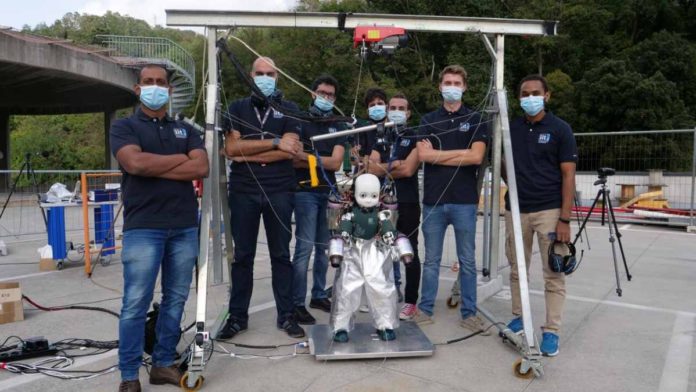A team of researchers at Istituto Italiano di Tecnologia has recently been exploring what they believe is a fascinating idea- creating flying humanoid robots. Nevertheless, to control the movement of flying robots, objects, or vehicles, researchers will need systems that can reliably estimate the thrust produced by propellers, which enable them to move through the air.
Researchers are building the model from the data they have collected. In addition to centrifugal force, the team’s framework also uses the entire robot’s “centroidal momentum” to estimate thrust. Among roboticists developing humanoid systems, this is a value that is commonly used to control and estimate their movement.
Recently, the team developed a framework for estimating thrust intensities in flying multibody systems without thrust-measuring sensors. During the research at the Artificial and Mechanical Intelligence lab, Daniele Pucci, the head of AMI Lab, aimed to create a robot that can maneuver objects, walk on the ground, and fly.
Read More: Humanoid Robot Sophia will be available for Auction as iNFT on Binance
As opposed to designing a new robotic structure, researchers decided to extend the capabilities of a humanoid robot to include flight since many of them can manipulate objects and move on the ground.
Pucci’s team tested the framework on the iRonCub robot, an evolution of the iCub robot with the integrated jet engines. The robot has been under development for some time. However, recently it has been demonstrated in its entirety.
Also, the team is planning to work on enhancing iRonCub’s flight capabilities. It is hoped that a reliable and performance-oriented humanoid will be developed that is capable of terrestrial and aerial locomotives in the future.
Affaf Momin and Hosameldin Awadalla plan to improve Pucci’s thrust estimation framework with AI and data-driven computational tools. Giuseppe L’Erario, a colleague of the researchers, will integrate the algorithms into controllers to integrate robot walking, maneuvering, running and horizontal flight strategies.


